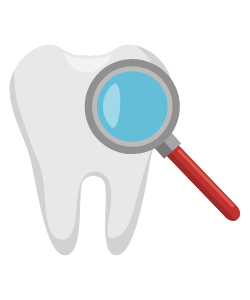If your tooth has large cavities or is cracked, you may not maintain a beautiful smile and preserve your general oral health. You need a dental crown to restore the damaged tooth's function, protect it and add some more pleasing aesthetics. However, most people with a damaged or cracked tooth don't mind about how the tooth would look later; they focus more on what the dental procedure entails. If you are ready for a dental crown procedure, here's what your dentist will do.
Assess the Tooth
Your dentist will first inspect your teeth to know if getting a dental crown is the most suitable option. If the dentist finds that your tooth can't support the crown, they may recommend a different dental treatment like a root canal. You are a good candidate for a dental crown if the cavities are too large to be filled or if you have missing teeth that need a bridge. A dental crown could also help if your teeth are badly shaped, discoloured, weak or worn down. Consult your dentist when choosing the crown material — ceramic, amalgam, metal, porcelain or composite resin — to know which one suits you best.
Sedate the Tooth
Your tooth and the gum tissue are anaesthetised or numbed to make them ready for the crown. If you had a root canal and the nerves of the tooth got removed, the dentist may not need to anaesthetise it. A needle is used to numb the tooth and the gum tissue, but the dentist could still use pain-free options such as laser dentistry if you don't like being poked. Here, the dentist uses a dental laser to perform their dental tasks, including removing the tooth material.
Shape It
Once the tooth has been numbed, the dentist pushes the gums away from the tooth using gingival retraction chords. This helps the dentist to trim the tooth low without cutting the gums. The crown to be placed has to be thick; thin crowns may appear unnatural and can break easily. The amount of tooth enamel that needs to be removed depends on the crown's material and location of the tooth. If the dentist needs to remove a filling or if the tooth is decayed or structurally damaged, the dentist may remove more enamel.
Fit the Crown
The dentist will fit the crown on the tooth stump, check if it's properly placed and then ask you to bite down gently. They may make a little drill to adjust the crown and then floss around the tooth. If you don't like how the crown looks, ask the dentist to make some changes before they cement it. Tooth cementing may cause a burning sensation in your gums, but it only lasts for a short time. Don't floss around the crown or eat sticky, hot or hard food within the first 24 hours to allow the cement to harden or cure properly.
To learn more about dental crowns, contact a dentist.
Share
